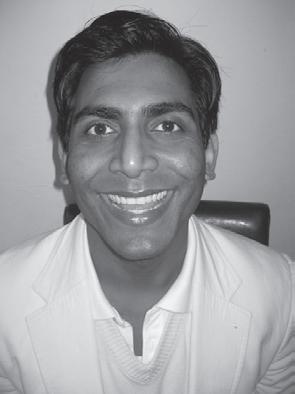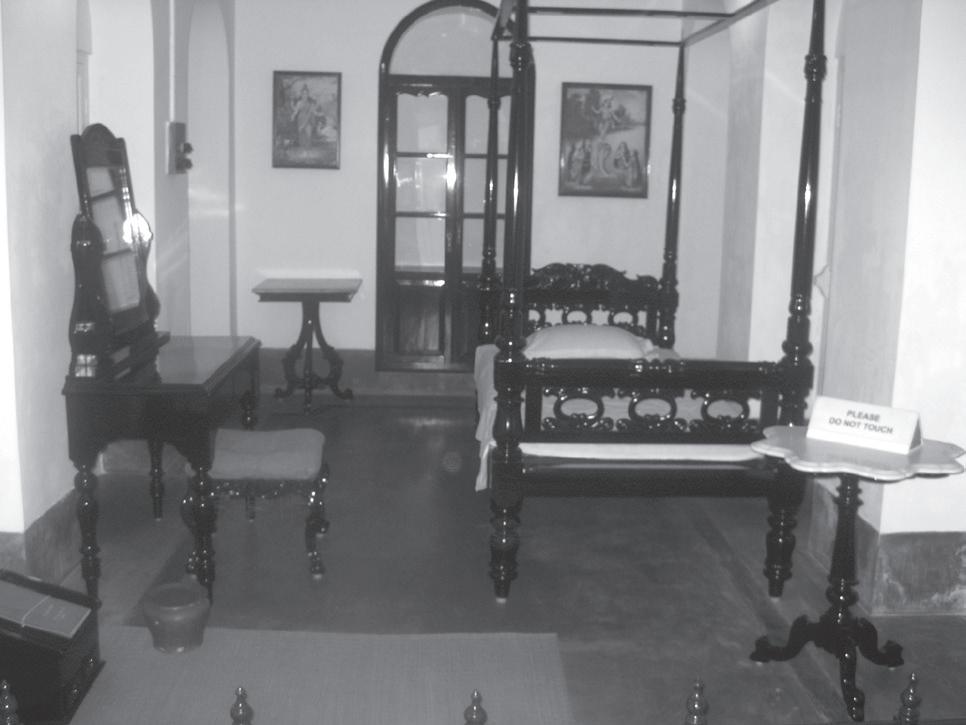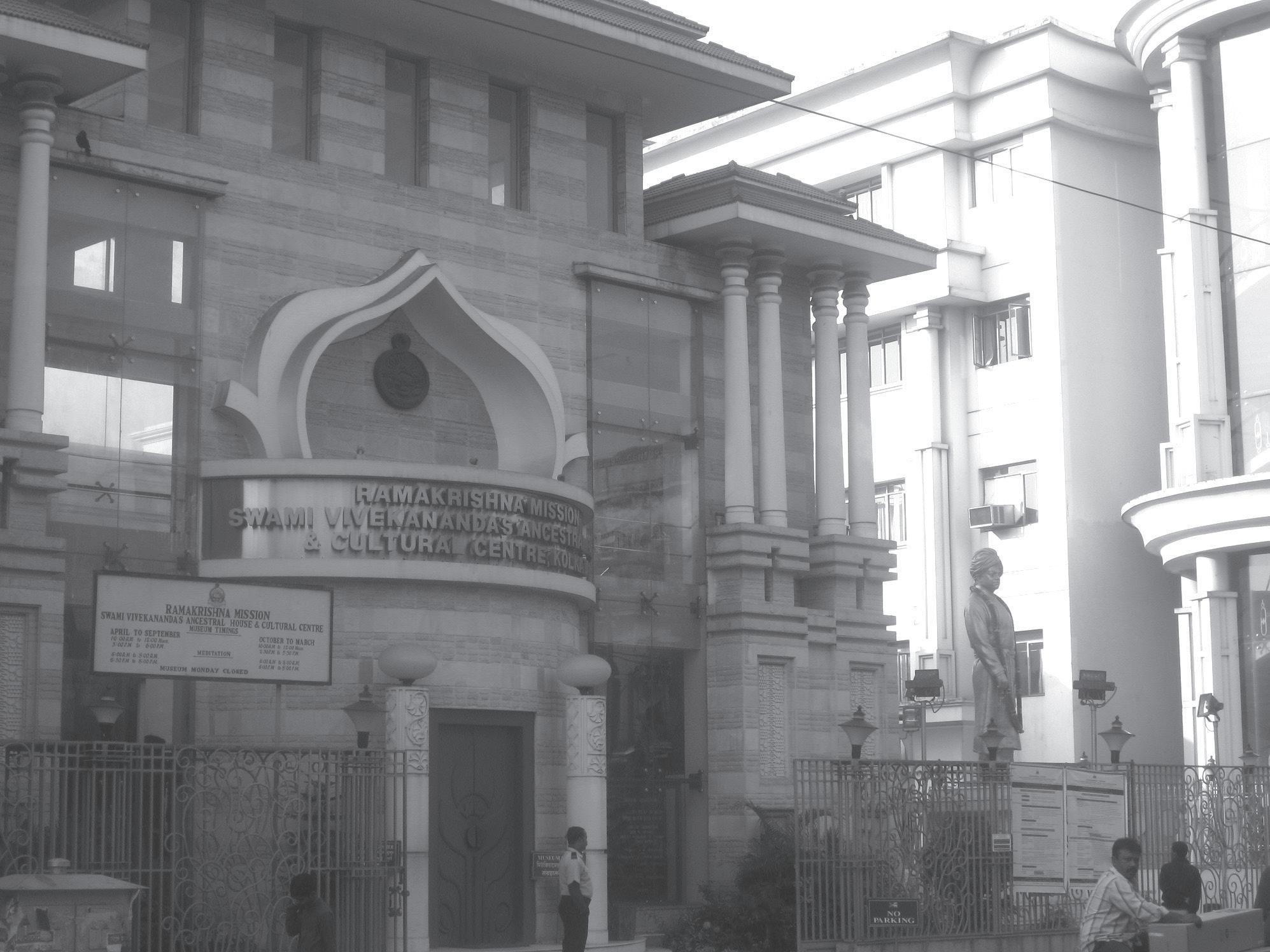
4 minute read
Preserving the past
from 2010-01 Sydney (2)
by Indian Link
When I visit Calcutta, I love going to North Calcutta to buy books on College Street and to admire the grandeur of the old Calcutta houses. On this trip, I was looking for Sustra Samhita from Sanskrit Pustak Vandar. The day was Swami Vivekananda’s birthday and just across the road on Gour Mohan Mukerjee Street, I noticed a newly renovated house with a statue of Swami Vivekananda at the front. My curiosity discovered that it was the birth place of Swami Vivekananda and I ended up buying a Rs 100 ticket to see his ancestral home which is being preserved, renovated and restored by the Ramakrishna Mission.
Inaugurated by Dr APJ Abdul Kalam, former President of India on 1 October, 2004, it is a memorial and cultural complex that highlights Swami Vivekananda’s family background and his importance in history. A local newspaper stated that the central government is planning to celebrate Swami Vivekananda’s birthday as Heritage Day in educational institutions, to attract students towards conservation of our heritage. Swami Vivekananda preserved the true essence of Hindu culture and heritage, whilst promoting it across the globe. He was essentially a man without frontiers and was regarded as one of the architects of global unity in the future. With his unique idealism, he gave the modern world a few pointers such as: ride the crest of evolution and be the maker of one’s own destiny; reality is always in harmony with the discoveries of modern science; ethics and morality are based in freedom, fearlessness and strength; and, religion is free from superstitions, dogmatism and intolerance and therefore it should foster universal brotherhood and be the means of attaining the highest fulfillment in a person’s life.
Swami Vivekananda was born in 1863 in this wellpreserved house, as the eldest son of Viswanath Dutta and Bhuvaneswari Devi. Swamji’s mother was the only child of
Nandalal Basu of the renowned Basu family. Swamiji’s original name was Narendranath Dutta. His father Viswanath Dutta was an attorney-at-law, and a successful one. He earned well, but spent his wealth on leading an aristocratic life surrounded by relatives and friends. He also helped many young students with their education.
On 25 February 1884, Swamiji’s father died suddenly, plunging the affluent family into poverty, as they had no savings. Hardship followed, and to make things worse, some of their relatives put forth claims for the ownership of the property. The dispute went to court, and the legal battle dragged on. On settlement, the entire property was divided into ten parts. A portion of the house was even demolished to make a common passage for inhabitants of the building where Swamiji lived with his mother and brothers till their deaths.

The house was originally built 300 years ago, by Swamiji’s great-grandfather, Rammohan Dutta, who was an associate of an English solicitor and earned a lot of wealth through his profession. The house is in Simla Palli, a locality in North Calcutta and during Swamiji’s time, it was surrounded by a garden and a large open space beyond. With Calcutta constantly growing into a mega city, the road to the house is now a narrow lane, known as Gour Mohan Mukerjee Street.
I visited the museum section of the building which displayed historic courtyard used to house a stable for horses, and adjacent to these were separate buildings for men and women. The ground floor in the main house was used as a kitchen and dining hall, and above were the residential chambers. From their enclosure ladies of the house could watch the great Bengali pujas and ceremonies held in courtyard. The ladies met, talked and moved freely on the roof. In 1963, the original building had reached near dilapidation, with 54 families and small business centres as its occupants. The site of Swamaji’s ancestral house had become a virtual slum. But the monks and devotees in Ramakrishna Mission had a growing desire and vision to take concrete steps towards establishing a memorial institution for Swamiji in the place of his birth. A proposal was sent to the West Bengal government in 1963, Swamiji’s birth centenary, and was accepted; however the existing tenants challenged the acquisition proceedings, leading to a legal tussle that lasted three decades.

With the consent of the Court, Ramakrishna Mission provided alternative housing for the tenants and the West Bengal Government acquired the whole building and an adjoining plot of land. The Bengal government handed over the property to Ramakrishna Mission, and they took on the task of renovation and restoration,

The reconstruction work started with cleaning up of the whole area and acquiring the original plan of the house from the Calcutta High Court. To reconstruct the house in its original format, brick, tiles and construction works came from different parts of Bengal such as Bakura, Birhum and Murshidabad. Dedicated and painstaking efforts led to preserving the heritage building with a meditation hall and museum, library and seminar hall, Vivekananda research centre and a rural and slum development centre. The whole project was estimated at a cost of Rs. 20 crores provided by Central Government (Rs 9.90 crores), West Bengal Government (Rs 6 crores) and Ramakrishna Mission (Rs 4.1 crores).
Walking through the living rooms with their black wood furniture, the Thakur Dalan, veranda and staircase, I felt that the ticket cost was justified and an integral part of Calcutta’s heritage is now preserved. The number of visitors increases steadily, as they pay homage to a great son of Mother India. Swami Vivekananda endured hardship until the end of his life to uplift the poor masses of India and also raised the prestige of Indian culture across the globe. Subhash Chandra Bose wrote, “Swamiji Vivekananda harmonised the East and West, religion and science, past and present. And that is why he is great. Our countrymen have gained unprecedented self-respect, self-confidence and self-assertion from his teachings.”










